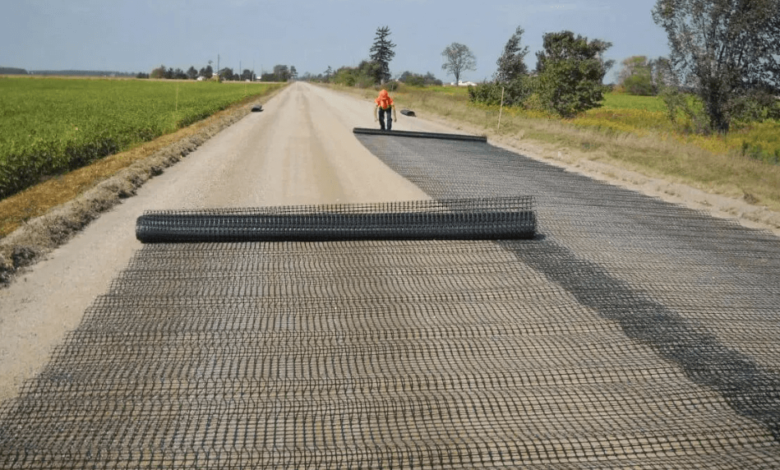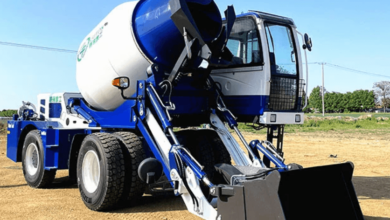Understanding Geotextil: Function, Types, and Applications

One such material is geotextil—a highly adaptable fabric that plays an important part in construction, landscaping, soil stabilization, and drainage systems. Though it is often hidden from plain view, the impact of geotextil on the performance and longevity of engineering projects is enormous.
This article explores what geotextil is, its characteristics, different types, and how it’s shaping the future of sustainable construction and environmental protection.
What Is Geotextil?
Geotextil refers to a synthetic permeable fabric used in geotechnical and environmental applications. It is designed to interact with soil, rock, or any other geotechnical material. Unlike traditional materials used in construction, geotextil provides filtration, reinforcement, protection, drainage, and separation.
Made mostly from polymers like polypropylene or polyester geotextil is produced either by weaving fibers together or bonding them without weaving (non-woven). These fabrics can be tailored for specific purposes and are widely used due to their adaptability and cost-efficiency.
See also: Discovering the Power of Calculator Trigonometri
Key Functions of Geotextil
The multi-functional nature of geotextil makes it indispensable in several applications. Its main functions include:
1. Separation
Geotextiles prevent the mixing of different layers of soil. For example, in road construction, they stop the subgrade from merging with the aggregate base, preserving the integrity of each layer.
2. Filtration
This feature is valuable in drainage systems where controlling sediment flow is critical.
3. Drainage
It facilitates water movement away from or within a structure, making it useful in roads, retaining walls, and sports fields.
4. Reinforcement
Geotextil adds mechanical strength to weak soils by distributing loads and preventing deformation. It reinforces slopes, embankments, and retaining structures.
5. Protection
Used as a cushioning layer, geotextil protects geomembranes in landfills or waterproofing systems from punctures by sharp stones or heavy equipment.
Types of Geotextil
There are two primary categories of geotextil, each offering specific properties for different applications:
Woven Geotextil
Woven geotextil is manufactured by weaving fibers together. It is strong, durable, and offers excellent tensile strength, making it ideal for reinforcement and stabilization applications. These fabrics have lower permeability but are ideal where strength is a priority.
Uses:
- Road base stabilization
- Erosion control on slopes
- Subgrade support in railways
Non-Woven Geotextil
Non-woven geotextil is made by bonding fibers through heat, needle-punching, or chemical treatment. It is more flexible and offers higher permeability, making it perfect for drainage and filtration applications.
Uses:
- Drainage systems
- French drains
- Filtration layers under riprap
Common Applications of Geotextil
Thanks to its versatility, geotextil is used across a wide range of industries and project types.
Road and Highway Construction
In road projects, geotextil is layered between the subgrade and base material to improve load-bearing capacity and prevent rutting. It also enhances drainage, which is essential for maintaining pavement life.
Landfill and Waste Management
Geotextil is placed over or beneath geomembranes to protect against punctures and facilitate leachate collection. It ensures environmental safety by keeping toxic fluids from contaminating groundwater.
Coastal and River Engineering
Erosion control is critical along shorelines and riverbanks. Geotextil serves as a filter layer that holds soil in place while allowing water to flow through, effectively mitigating erosion.
Agriculture and Landscaping
In farming and landscaping, geotextil is used for weed control, soil stabilization, and moisture retention. It reduces water loss and supports healthier plant growth by maintaining proper drainage.
Railways and Airports
Heavily trafficked infrastructures like railway tracks and airport runways benefit from geotextil reinforcement, which reduces settlement and enhances long-term performance under repeated load cycles.
Advantages of Using Geotextil
Choosing geotextil in civil and environmental projects offers several advantages:
- Extended lifespan of infrastructure: Enhances the durability of roads, retaining walls, and embankments.
- Cost-effective: Reduces maintenance and repair costs.
- Environmentally friendly: Prevents soil erosion and water contamination.
- Flexible design: Adapts to various terrains and project scales.
- Quick installation: Lightweight and easy to handle on-site.
These benefits make geotextil an increasingly preferred material in modern construction and ecological projects.
Selection Criteria
Not all geotextiles are created equal.
- Soil type: Determines the permeability and strength needed.
- Load conditions: Heavier loads require stronger woven types.
- Water flow rate: Filtration and drainage requirements influence fabric porosity.
- Environmental exposure: UV resistance may be important for exposed installations.
- Chemical compatibility: Must withstand exposure to contaminants in certain applications.
Consulting geotechnical engineers or material specialists can help ensure the right match for the intended use.
Limitations and Considerations
While geotextil offers many advantages, some limitations must be taken into account:
- Puncture risk: Improper installation or exposure to sharp objects can damage the fabric.
- UV degradation: Long-term exposure to sunlight may weaken certain types.
- Biological clogging: In filtration applications, organic materials may clog pores if not properly maintained.
- Wrong selection: Using the wrong type of geotextil can reduce effectiveness or lead to failure.
With proper planning, installation, and maintenance, these limitations can be effectively managed.
Conclusion
Geotextil is a foundational material that continues to revolutionize how we approach construction, environmental management, and infrastructure sustainability. Its diverse capabilities—from drainage and separation to reinforcement and protection—make it a crucial asset in both small and large-scale projects.
Whether you’re building a road, managing a landfill, or landscaping a garden, the use of geotextil ensures strength, longevity, and environmental safety. With continuous innovation, its role will only expand, aligning construction practices with modern ecological and performance standards.






